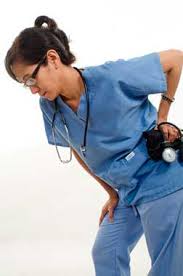One of the most difficult aspects of a nurse’s job is often the sheer physical challenges of being on your feet all day and frequently moving patients in and out of wheelchairs, assitive devices, beds, bathrooms, or from place to place.
Because both patients and nurses come in all shapes and sizes and because people are generally unpredictable, moving patients isn’t easy for nurses. Sometimes, moving patients can be unsafe and cause nurses everything from aching backs and sore wrists to serious, lasting bodily injury.
According to the Bureau of Labor Statistics, 294,000 hospital workers suffered nonfatal injury or illness in 2014. That’s an alarming number of injuries for just reporting to work every day. Nurses can help keep their risk of injury lower by being trained in safe movements that consider the varying weight, body movement, and force exerted by the patients being moved. Equally important, if not even more so, is advocating for the availability and proper use of equipment to help them move patients.
Most nurses accept the risk of injury as a part of such a physically taxing job, but the reality is that some of the injuries can be disabling and many of the injuries are preventable. The more you can protect yourself every day, the safer your will be and the level of care you can give will remain high. After all, if you are in pain, you could be putting yourself and your patients at further risk.
Last year, National Public Radio devoted a series to injured nurses, which stated that even when nurses try to move a patient with what they think is a safe method, they still can injure their backs and cause other strains. The topic is so pressing that many states are enacting legislation to help ensure the safety of medical workers.
But there is a way to reduce the injuries and that is with training of safe ways to move patients and using all the available technology and equipment to help. Even if you are busy, there’s no shortage of resources to help you find the best way to move patients and to identify equipment that will help lessen the physical strain. It’s always a good idea to advocate for training in your workplace, so you can get a real, in-person experience to make sure you are moving your body and your patient properly to reduce the risk of injury.
If that’s not possible, see if another hospital or facility if offering any kind of training class. Whether you take a class or not, be sure to look at the resources offered by the American Association for Safe Pateint Handling and Movement, the American Nurses Association, and the Occupational Safety and Health Association (OSHA). All these organizations have in-depth resources to help educate nurses about the safest and most risk-free ways to move and lift patients.
If you are in a career you love, you need to protect yourself as much as possible and that means reducing your risk of injury as much as you can.
- Is the FNP Program Right for You? - April 24, 2024
- WOC Nurses Week Highlights Specialty - April 16, 2024
- Honoring Radiology Nurses Day on April 12 - April 12, 2024



